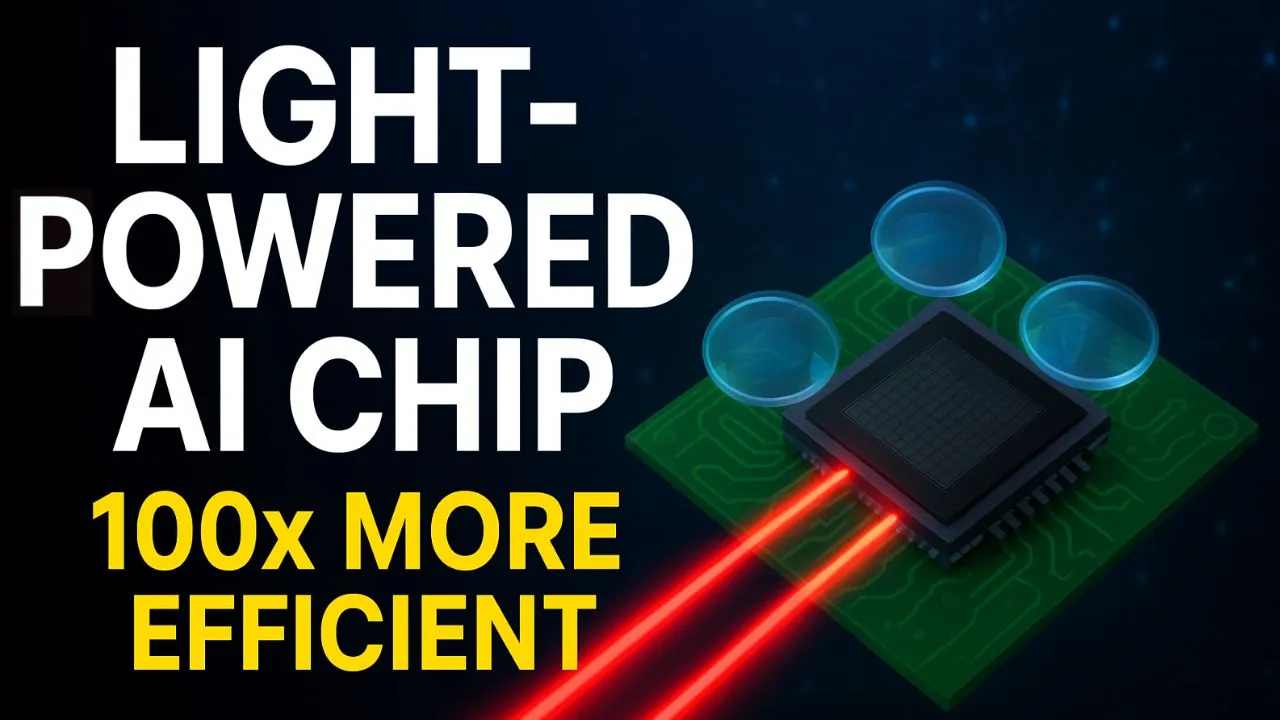Blog
Light-Powered AI Chip Developed, 100x More Efficient

September 10, 2025
In a remarkable breakthrough, researchers have unveiled a new AI chip powered by light, capable of performing computations up to 100 times more efficiently than traditional electronic chips. This innovation could revolutionize artificial intelligence (AI) computing, drastically reducing energy consumption while enhancing performance.
The Need for Energy-Efficient AI
Artificial intelligence has grown exponentially in recent years, powering everything from voice assistants to autonomous vehicles. However, these systems are energy-intensive, often consuming vast amounts of electricity for data processing and model training.
With global AI adoption expanding, energy efficiency has become critical. The new light-powered chip addresses this challenge by using photons instead of electrons, dramatically reducing power requirements and heat generation while maintaining high computational accuracy.
How the Light-Powered Chip Works
Unlike conventional AI chips that rely on electricity, the light-powered chip uses laser light and micro-Fresnel lenses embedded on the circuit board. Each lens is smaller than a human hair and works alongside machine learning algorithms to analyze images, patterns, and data streams directly using light.
Once computations are complete, the results are converted back into digital signals for integration with standard computing systems. This approach reduces energy loss, allows faster processing, and keeps the chip cool, making it suitable for high-performance AI tasks.
Key Features and Performance Metrics
The prototype chip has demonstrated impressive capabilities:
- Energy Efficiency: Up to 100 times lower power consumption compared to conventional AI chips.
- High Accuracy: Successfully classified handwritten numbers with 98% precision in trials.
- Compact Design: Micro-lenses integrated onto a small chip reduce size while increasing processing power.
- Rapid Data Processing: Light-based computation enables near-instantaneous pattern recognition.
Researchers believe the chip could scale for complex AI applications, including robotics, healthcare imaging, and cloud-based AI systems.
Historical Context: AI Chip Evolution
AI chips have evolved from general-purpose GPUs to specialized ASICs and neuromorphic processors. Each generation improved performance but remained limited by power consumption and heat generation.
Photon-based computing represents a paradigm shift, offering a way to bypass the limitations of electron-based systems. This approach could unlock next-generation AI models without dramatically increasing energy costs.
Industry Implications
The light-powered AI chip has far-reaching implications:
- Healthcare: Faster MRI image processing and AI-assisted diagnostics with reduced energy use.
- Autonomous Vehicles: Energy-efficient real-time pattern recognition for self-driving cars.
- Data Centers: Significant electricity savings for cloud AI servers, lowering operational costs.
- Consumer Electronics: Smarter devices with longer battery life, from smartphones to wearables.
- Green Tech: Reduced carbon footprint for AI applications worldwide.
Industry experts suggest this technology could accelerate AI adoption in regions with limited energy infrastructure.
Global Perspective
Countries like the U.S., China, and Japan are investing heavily in energy-efficient AI hardware. Light-powered chips may position innovators at the forefront of sustainable AI technology, offering competitive advantages in both commercial and research applications.
Challenges and Adoption Roadmap
Despite its promise, several challenges remain:
- Mass Manufacturing: Producing micro-Fresnel lenses at scale is technically demanding.
- Integration: Combining light-powered chips with existing digital infrastructure requires new standards.
- Cost: Initial production may be expensive, though efficiency gains could offset costs over time.
Researchers aim to expand the chip’s capabilities for general-purpose AI applications within five years, potentially enabling mainstream use by 2026–2027.
Expert Insights
Dr. Anjali Rao, a computational systems researcher, said, “Photon-based computing is no longer theoretical; this chip demonstrates practical implementation for high-performance AI.”
Tech analysts highlight its potential to reshape AI hardware and reduce global energy demands for computational tasks, making AI development more sustainable.
Future Applications
The light-powered chip could enable:
- Smarter autonomous robots
- AI-powered smart cities
- Real-time environmental monitoring
- Energy-efficient AI in smartphones and IoT devices
Such applications could revolutionize both consumer and industrial AI.

